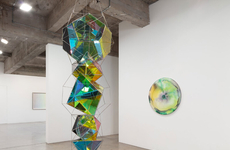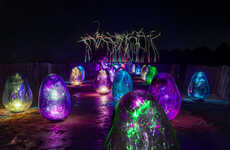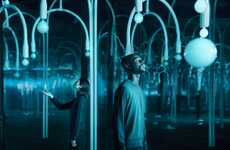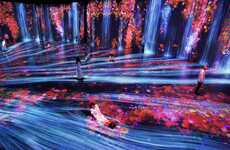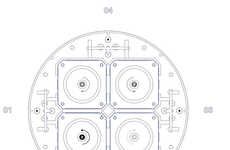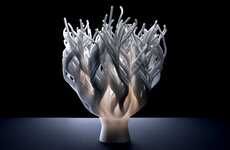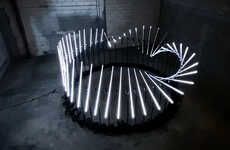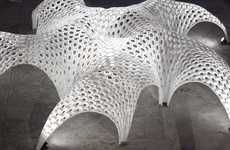
Aquatic Colors Focuses on a Breathtaking Bloom of Jellyfish
Meghan Young — October 18, 2012 — Unique
References: monoscape.jp & mymodernmet
The Aquatic Colors interactive installation is a sight to behold, not to mention experience for oneself. Inspired by the underwater world, it shines with a deep blue glow, turning each and every visitor into a sea creature themselves. Yet it is the simulated jellyfish that steal the show. The Aquatic Colors interactive installation revolves around a bloom of jellyfish, which will mesmerize in a magical way.
Created by Japanese artist Takahiro Matsuo in collaboration with architect Akihisa Hirata, the Aquatic Colors installation may be an exploration through light, projections and architecture, but it is the interaction that will truly win people over. As people mill about closer or farther away from the walls of the Aquatic Colors installation, the number of jellyfish increase or decrease.
Created by Japanese artist Takahiro Matsuo in collaboration with architect Akihisa Hirata, the Aquatic Colors installation may be an exploration through light, projections and architecture, but it is the interaction that will truly win people over. As people mill about closer or farther away from the walls of the Aquatic Colors installation, the number of jellyfish increase or decrease.
Trend Themes
1. Interactive Underwater Installations - Artists and architects collaborate to create immersive installations that simulate the underwater world and allow visitors to interact with simulated sea creatures, providing opportunities for further innovation in the realm of interactive experiences.
2. Simulated Sea Creatures - Jellyfish and other sea creatures are becoming a popular subject for interactive art installations, offering ample opportunity for designers and engineers to develop new technologies and techniques for simulating the movements and behaviors of underwater life.
3. Projection-based Art - New developments in projection technology allow for an even more immersive interactive experience in art installations like Aquatic Colors, which could lead to further innovation in projection-based arts and entertainment.
Industry Implications
1. Art Installation - The Aquatic Colors installation highlights the use of interactive technology in traditional art installations, providing opportunities for further innovation in the art world.
2. Architecture - Collaborations between artists and architects like those seen in the Aquatic Colors installation offer opportunities for innovation in architectural design and experience-based architecture.
3. Entertainment - Interactive, immersive installations like Aquatic Colors could inspire the development of new entertainment experiences, from theme park attractions to virtual reality games.
6.3
Score
Popularity
Activity
Freshness


